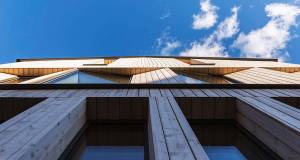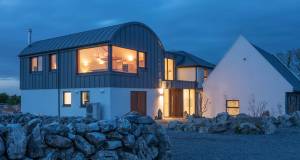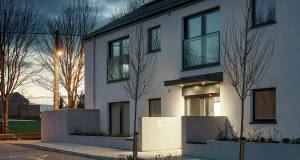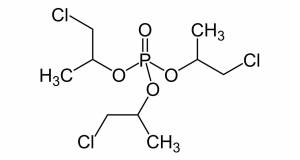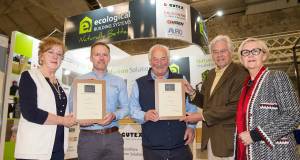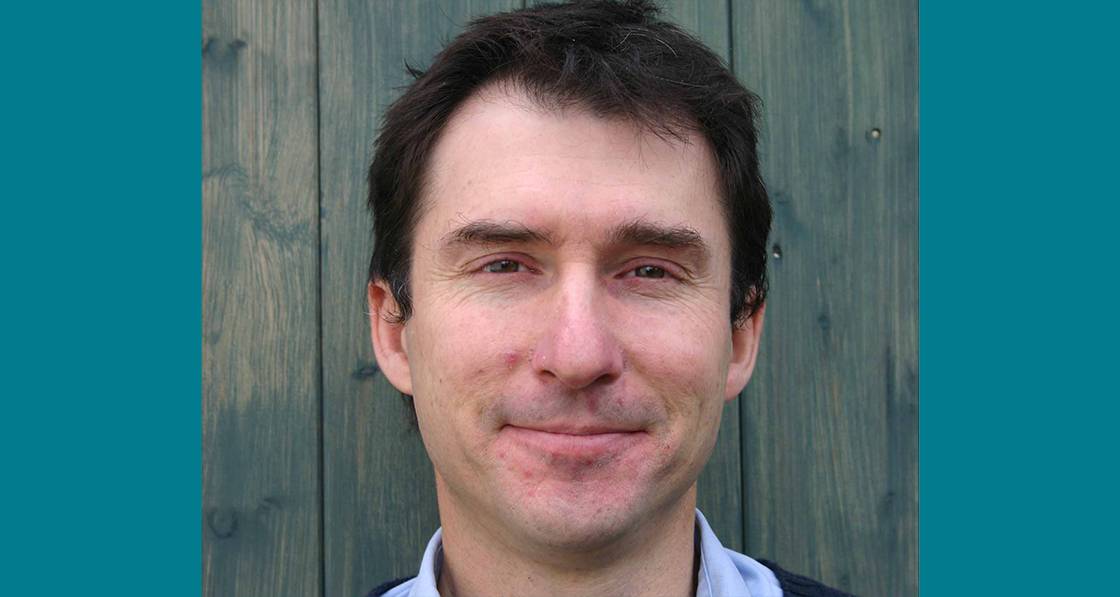
- General
- Posted
Neil May 1962-2018
“Only if we are capable of dwelling, only then can we build.”
- Heidegger
Neil May was a charismatic leader of our industry, a powerhouse of ideas who challenged and inspired everyone he worked with. The theme of his work was better buildings – not just better functionally or architecturally but also socially, culturally, ecologically and philosophically. He taught us to think about what buildings are for, what their place is in our heritage and society, the role they should fulfil in our future, and how they should perform. In his own words:
What are buildings for? And that leads to the question: what are human beings for? What is our purpose? We need to think deeply about that if we are to create a future that is sustainable as well as meaningful. Buildings are manifestations of the values of our society and if we want to have more beautiful, sustainable and creative buildings then we have to address our core values first.
Neil studied for his first degree in Modern History at Oxford and went on to take an MPhil in Sociology at Delhi University, where he was a Commonwealth Scholar and specialised in cultural anthropology. He conducted extensive field work in and around Delhi and made a documentary film in Bihar. Neil remained in contact with leading anthropologists and social thinkers in Delhi, where his work is still respected. In 1988, having returned to the UK, he became a building labourer for four years before setting up his own award-winning ecological and conservation building company, Neil May Builders, which he sold in 2004.
At heart, Neil was always a builder – he knew how to put buildings together, and his straightforward, practical manner often somehow conveyed the impression that he had just been building a wall or installing some plumbing. Yet he was equally comfortable with professionals, academics and civil servants. Working with academics, he encouraged them to focus on making their work useful; but with professionals he insisted on systematic research and evidence-based conclusions.
Neil founded Natural Building Technologies in 1999, and pioneered the supply of high-performance sustainable, vapour permeable insulation and envelope systems for buildings. While managing director of NBT he set up the Better Buildings Group, including many leading energy and sustainability consultants who held meetings and seminars in NBT’s chilly warehouse near Aylesbury.
Neil inspired the group’s work promoting sustainable new-buildings and sustainable retrofit. One member of the group recalls “his passion for buildings, people and nature, (always those three things inextricably linked together) and his slightly bemused irritation that the construction industry and so much of society just didn’t ‘get it’, particularly when the evidence was clear for us to see.” Neil also contributed sustainability workshops to the senior management development programme of a leading building company, where he is reported to have astonished the delegates with his insight into the many and various unintended consequences of poor design.
In 2005, Neil brought together a group of natural building developers to campaign against the poor standard of performance of new homes in the UK. This was the start of a long collaboration with the Sustainable Development Foundation, which resulted in the creation of the Good Homes Alliance, the Passivhaus Trust, the Alliance for Sustainable Building Products and the Sustainable Traditional Buildings Alliance, each of which campaigned to change practice relating to performance problems that Neil had identified.
Neil was instrumental in establishing and nurturing all these organisations, before moving on to sort out the next problem on his list! As a colleague remarked “Neil had the wonderful gift of bringing people together into communities of interest, creating what at first seemed to be niche groups but ended up becoming hugely influential for change at a national level.”
When the UK government conceived the Green Deal, Neil was appalled by the potential for damage to our homes and architectural heritage from large-scale retrofit using inappropriate materials and techniques, a cause he took up with the Department for Energy and Climate Change (DECC). One civil servant at DECC recalls him as “A passionate lobbyist for doing the right thing, who did it in the nicest possible way. You had your arm twisted without realising it.” For the Sustainable Traditional Buildings Alliance, Neil secured DECC funding for research that led to the influential report Responsible Retrofit of Traditional Buildings and the development of the well-known Guidance Wheel.
Neil also contributed to the Each Home Counts review, and joined the BSI Retrofit Standards Task Group, where he was influential in establishing a holistic vision for the retrofit standards framework called for by the review. This in turn influenced the scope of BSI’s forthcoming domestic retrofit standard PAS 2035 Retrofitting Dwellings for Improved Energy Efficiency, for which Neil served as a member of the industry steering group.
Neil’s work on responsible retrofit led to an opportunity to join the Institute for Environmental Design and Engineering at University College London (UCL) as a Senior Research Fellow. He had an immediate impact: as one colleague put it: “I am one of many with whom Neil collided and bounced off, sending us in new directions. He changed the way I think about housing. The intellectual challenges he posed were matched by personal warmth which made engaging with his ideas much more than just another collaboration.”
Neil was also influential in establishing a ‘systems thinking’ approach within the Institute – he guided the development of the ground-breaking Housing, Energy and Wellbeing project. Colleagues in UCL’s Bartlett School of Planning report that his enthusiasm for thinking differently about the housing crisis was infectious. “We quickly understood that his knowledge and interests were almost boundless. UCL’s ‘Rethinking Housing’ initiative followed, bringing together researchers from UCL and beyond, and a new urgency in our housing work – driven by Neil.”
The work on responsible retrofit also led Neil to BSI, where he collaborated on a White Paper on Moisture in Buildings, which advocates a new principles-based approach for moisture risk assessment that is being incorporated in a new edition of BS 5250 Code of practice for the control of condensation in buildings. His collaborator writes “Meeting Neil was a shock to the system, he had so much enthusiasm, so many interests, so many new perspectives on well-trodden ground and so much warmth and friendship. The White Paper stands as a tribute to him.”
In parallel with the BSI work, the most recent of Neil’s projects was the establishment in 2016 of the UK Centre for Moisture in Buildings, at UCL. The Centre brings together partners from UCL, BRE, Heriot Watt University and the London School of Hygiene and Tropical Medicine. Already UKCMB has over twenty projects completed or in progress, funded by Government, a research council, charitable trusts, industry bodies and commercial clients and sponsors, all driven by Neil’s enthusiasm.
He led major projects for BEIS, Bristol City Council, Historic England and the National Trust. The UKCMB has also launched a training programme that promotes the principles of moisture risk management that Neil identified for the BSI White Paper and BS 5250.
This article was originally published in issue 28 of Passive House Plus magazine. Want immediate access to all back issues and exclusive extra content? Click here to subscribe for as little as €10, or click here to receive the next issue free of charge
A UKCMB academic at UCL writes “I feel honoured and privileged to have worked with Neil and been a part of UKCMB, the last of his countless brainchildren. We worked, conversed, argued and laughed – he never ceased to surprise with the depth and richness of his intellect and experience”.
Another member of UKCMB remarks “Neil was interested in people as much as what they had to contribute, and it wasn’t long before we became friends as well as colleagues. I was impressed that, no matter how complex or mountainous a task, he was never fazed. His knowledge and intellect allowed him to join up the dots. Much good has stemmed from that, and it will continue to be his legacy.”
An industry colleague remarks “Neil knew what sustainability meant for buildings and crucially for people – the two were inseparable and had to be in harmony. This understanding elevated his work beyond a technical level and made him effective in communicating his vision to others.”
Neil was an adviser on environmental and building matters to the Benedictine Community at Quarr Abbey on the Isle of Wight, and he took a group of UCL colleagues there to experience the life of the monks and help them understand Neil’s own life and research philosophy. Of his work for the community, Neil wrote: “Part of its mission is to present an alternative and challenging vision of what it means to be fully human, and that is why I am involved.”
In 2017 Neil was awarded an MBE ‘for services to sustainability and energy efficiency in buildings and communities’.
In 2018, faced with an inevitably fatal condition and having survived one operation, Neil bravely chose to put his affairs in order, hand-over his work to colleagues and submit to a second, very risky surgical procedure. The outcome was this tragic loss, which for so many of us is painful and personal, but he has left us an immense and inspiring legacy of ideas and challenges.
This obituary has been compiled from material contributed by some of Neil’s many friends and colleagues, including academics at UCL, members of the organisations he helped to found and run, and individuals who worked with him.


